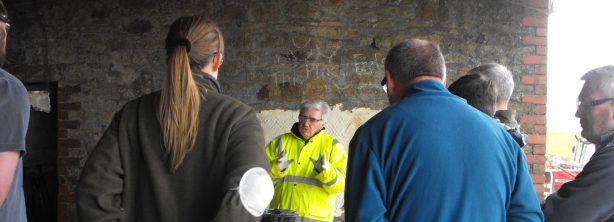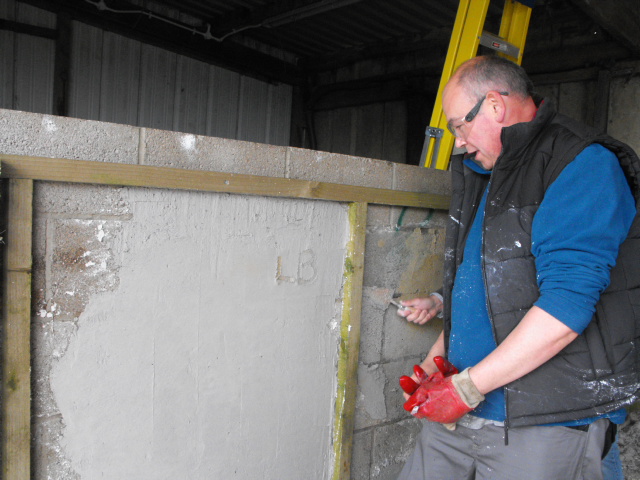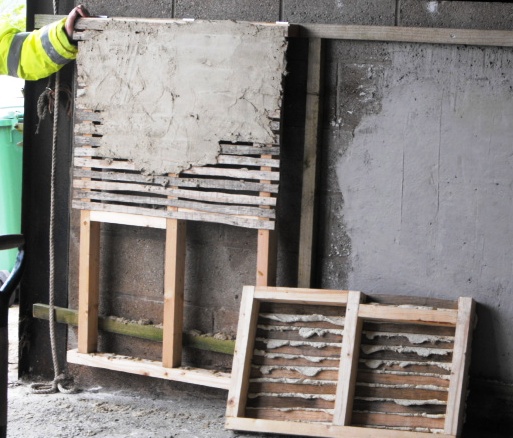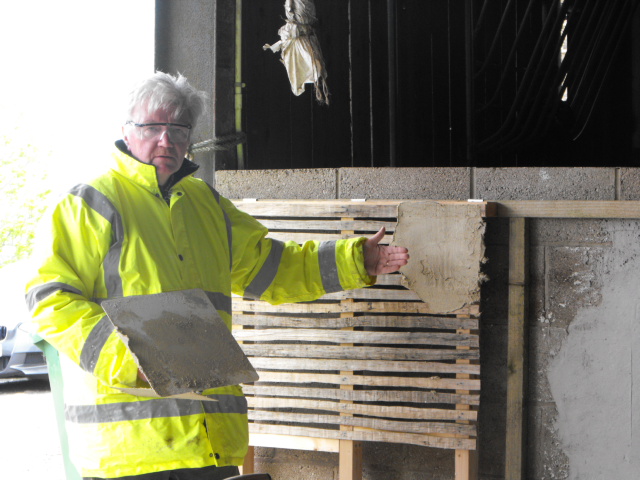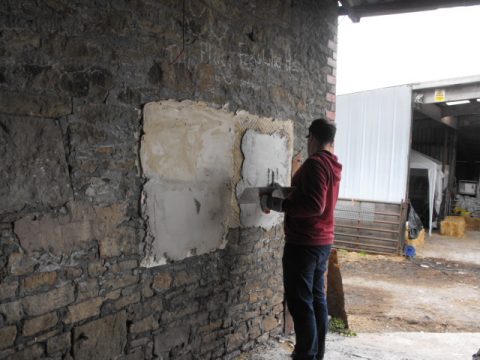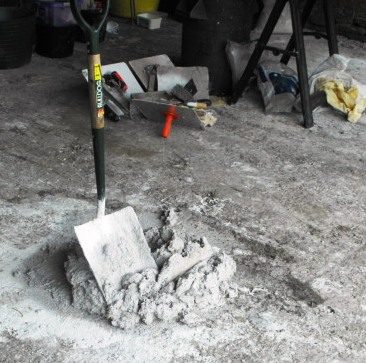UCLan students, studying MSc Building, Conservation and Adaptation course, came for a day to have a practical study of lime plastering and pointing.
During the day, the students learnt to make lime mortar, the practical application of it.
Trying out plastering and pointing, they had also watched the process of making Hot-mix lime mortar.
Lime
Lime has been used for thousands of years as a key building material. Today it is still used in repair and maintenance of historic buildings.
Before dry hydrate powdered lime, lime mortars were prepared using lime putty or quicklime mixes (also known as a ‘hot-mix’).
You can still use these traditional methods of preparing a lime mortar in building and repair work today.
Hot-mixed Lime mortars.
Hot mixed lime mortars are prepared by adding specific measures of quicklime to aggregate and water, together to form a mortar.
The quicklime reacts with water this generates heat, this simultaneously binds together with the aggregate to produce a mortar. This mixture can then be used while still warm (for certain works) or stored(‘banked’) for late use.
This varies from other methods of preparing lime mortars.
Slaked lime (putty or a dry hydrate powder) can be added to aggregate to form a mortar.
Hot-mixed lime mortars have some different properties to mortars prepared from mature lime putty or bagged dry hydrate powdered lime. Because the effect of the heat of the reaction, and the high alkalinity of the lime.
Hot-mixed lime mortars are prepared by adding specific measures of quicklime to aggregate and water. You then mix together the ingredients to form a mortar.
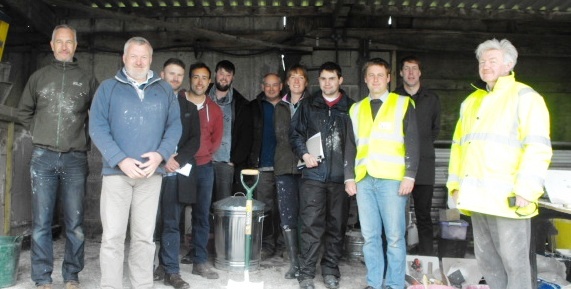
—————————————————————————–
The UCLan students observed the process of quick lime when it reacts with water. The process creates the steam that can be seen rising from the galvanised metal bin.

